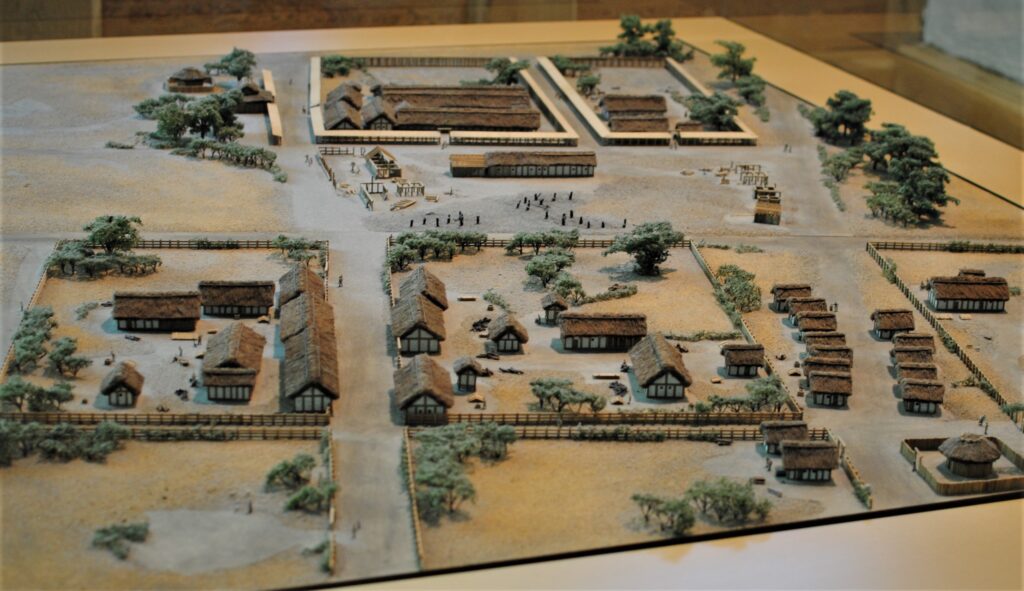 Several years ago, I took part in the National Geographic Genome Project. This study tracked migrations using DNA samples to compare to indigenous populations. Unlike the genealogical sites that compare submitted data to DNA, this looks at your ethnicity, not individual family members, and compares it to those populations. It was fun to participate and get my results. I didn’t find any surprises. My paper trail has my different lines going back to England, Ireland, Scotland, and Wales. So my results, showing descent from those areas, along with spikes from Norway and Denmark, made sense.
Several years ago, I took part in the National Geographic Genome Project. This study tracked migrations using DNA samples to compare to indigenous populations. Unlike the genealogical sites that compare submitted data to DNA, this looks at your ethnicity, not individual family members, and compares it to those populations. It was fun to participate and get my results. I didn’t find any surprises. My paper trail has my different lines going back to England, Ireland, Scotland, and Wales. So my results, showing descent from those areas, along with spikes from Norway and Denmark, made sense.
What was interesting was looking further back in time, where I had a sizeable spike in the area known as Bohemia. Most theories of the Celtic migration begin in this area, so I suppose that only makes sense. The exciting bit now is that I live in the area formerly known as Bohemia, a portion of which lies along the Czech/Bavarian border. So, who would have thought I’d move to Germany and explore my Celtic roots?
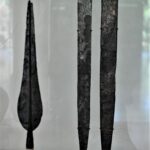 This area is dotted with ancient sites, many of them Roman. However, beneath these Roman sites, Celtic ruins have been found. We’ve visited several of them, but the most exciting lies 1.5 hours southwest of us in the town of Manching. Beneath the city at the confluence of the Paar and Danube rivers, they discovered a Celtic oppidum (city-like settlement) of the La Tène period (late iron age), dating from the 3rd-1st century BCE.
This area is dotted with ancient sites, many of them Roman. However, beneath these Roman sites, Celtic ruins have been found. We’ve visited several of them, but the most exciting lies 1.5 hours southwest of us in the town of Manching. Beneath the city at the confluence of the Paar and Danube rivers, they discovered a Celtic oppidum (city-like settlement) of the La Tène period (late iron age), dating from the 3rd-1st century BCE.
This settlement is the largest discovered in central Europe and, unlike most other sites, lies not on a hilltop but an open plain. Here the confluence of the rivers intersects with a major east-west route, making it favorably sited for trade and communication.
Remains of a circular settlement wall, including the east gate, appear to have enclosed a site of approximately 380 hectares, with the wall of timber, earth, and stone about 7 km in length. The surrounding area was used for agricultural purposes, along with containing deposits of bog iron. Gold can also be found in the vicinity.
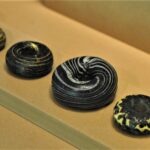 In the 2nd century BCE, Celts began living in organized settlements designed to accommodate thousands of people. One of the most studied is the oppidum in Manching. Estimates range from 5,000 people living
In the 2nd century BCE, Celts began living in organized settlements designed to accommodate thousands of people. One of the most studied is the oppidum in Manching. Estimates range from 5,000 people living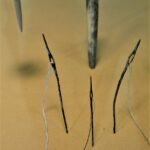 in the town to upwards of 10,000 in its heyday. This structure was part of the growing trade movement, creating a new socioeconomic system. Glass, pottery, food items, and iron products were produced on a large scale and sold. Before this period, most settlements made only what they needed.
in the town to upwards of 10,000 in its heyday. This structure was part of the growing trade movement, creating a new socioeconomic system. Glass, pottery, food items, and iron products were produced on a large scale and sold. Before this period, most settlements made only what they needed.
The oppidum consisted of a branching network of streets aligned on the cardinal directions with residential and commercial structures sitting in fenced parcels. On the outer areas were larger fenced farmsteads. Craft districts and ritual areas were also discovered during the excavations. These parcels were initially interpreted as farmsteads, as seen in the Hallstadt period (late Bronze Age to Early Iron Age). However, research has shown these rectangles to be designed for more specific uses, such as a craft, agriculture, or ritual. An artisan’s quarter has been identified with evidence of weaponry, minting, and processing raw materials such as metal, amber, wood, bone, glass, clay, and leather.
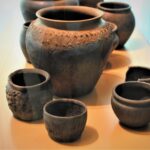 Inside each fence was a single-story post house of approximately 40-100 square meters (430-1076 square feet) consisting of one or more rooms. Most likely, these were half-timbered construction. Additionally, storage pits, workshops, wells, and longhouses were discovered on the site. And with the location along the river, there is evidence of storage buildings on stilts.
Inside each fence was a single-story post house of approximately 40-100 square meters (430-1076 square feet) consisting of one or more rooms. Most likely, these were half-timbered construction. Additionally, storage pits, workshops, wells, and longhouses were discovered on the site. And with the location along the river, there is evidence of storage buildings on stilts.
There is much evidence suggesting agricultural activity inside and outside the city wall. Large-scale cultivation of barley and spelt has been identified. Millet, einkorn, emmer, Avena, wheat, and rye were available. Lentils, hazelnuts, and a variety of fruits were eaten. With the location on the rivers, one can assume they ate fish. This was proven when traces of garum, a Mediterranean fish sauce, were found in the pits. Also in the rubbish were vast amounts of animal bone, indicating animal husbandry on a sizeable scale.
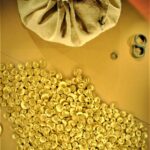 Economic stability is verified by the settlement having its own mint for coinage. The local trade system consisted of small silver coins and impure bronze ones. External trade relied on gold coins. One of the most significant Celtic finds ever, according to the museum, was a horde of over 450 gold coins. Three small bronze rings indicate they may have been stored in organic material.
Economic stability is verified by the settlement having its own mint for coinage. The local trade system consisted of small silver coins and impure bronze ones. External trade relied on gold coins. One of the most significant Celtic finds ever, according to the museum, was a horde of over 450 gold coins. Three small bronze rings indicate they may have been stored in organic material.
Additional finds include glass beads and bracelets, blue glass items, pottery, jewelry, and textiles. Imported items include Baltic amber and Mediterranean wine amphorae. In the artisan area, numerous tools of the trades were found.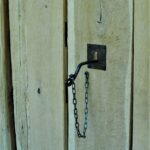
The Celts used more modern-sounding items, such as a measuring rod with bronze rings marking the length. This matches the measurements of the ground plans, which used multiples of half a Celtic foot, or 15.45 cm (roughly 6 inches). Isn’t that interesting? And surprisingly, a variety of locks and keys were found, suggesting people had something worth protecting. These were found on doors, gates, and even furniture.
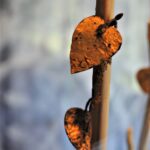 In the middle, a temple or shrine was found. It is the earliest sign of activity, indicating the oppidum grew outward from the center. This appears to have been used as early as the 4th century BCE. Ritual items include a horse sculpture, ironically made of iron, unlike comparable pieces cast in bronze. And in 1984, a ‘ritual cult tree’ was found. It is a wooden trunk with branches covered in gold leaf. Decorated with bronze ivy leaves and golden acorns, they found it in a wooden box decorated with a pattern of gold leaf. It is interpreted as an ivy-covered young oak and dates to the 3rd century BCE.
In the middle, a temple or shrine was found. It is the earliest sign of activity, indicating the oppidum grew outward from the center. This appears to have been used as early as the 4th century BCE. Ritual items include a horse sculpture, ironically made of iron, unlike comparable pieces cast in bronze. And in 1984, a ‘ritual cult tree’ was found. It is a wooden trunk with branches covered in gold leaf. Decorated with bronze ivy leaves and golden acorns, they found it in a wooden box decorated with a pattern of gold leaf. It is interpreted as an ivy-covered young oak and dates to the 3rd century BCE.
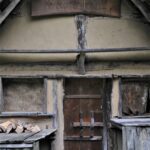 The extensive abandonment of the oppidum by 50 BCE probably accounts for the loss of its name. It was not handed over to Roman occupation but instead seems to have faded away. While it appears the settlement at Manching did see military conflicts over time; the final demise appears to coincide with the economic collapse of the Celtic system following the conquest of Gaul by Gaius Julius Caesar. Excavations have shown extensive scrap metal recycling in the final phases of occupation. Could this be due to the decline and eventual abandonment? No one knows for sure. However, the first Roman occupation of the site was a mansio (waystation) built in the 1st century AD named Vallatum, Latin for a walled place, referring to the ruins surrounding it.
The extensive abandonment of the oppidum by 50 BCE probably accounts for the loss of its name. It was not handed over to Roman occupation but instead seems to have faded away. While it appears the settlement at Manching did see military conflicts over time; the final demise appears to coincide with the economic collapse of the Celtic system following the conquest of Gaul by Gaius Julius Caesar. Excavations have shown extensive scrap metal recycling in the final phases of occupation. Could this be due to the decline and eventual abandonment? No one knows for sure. However, the first Roman occupation of the site was a mansio (waystation) built in the 1st century AD named Vallatum, Latin for a walled place, referring to the ruins surrounding it.
